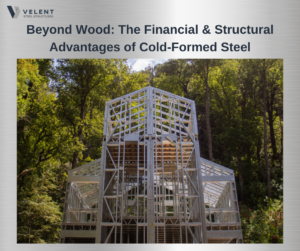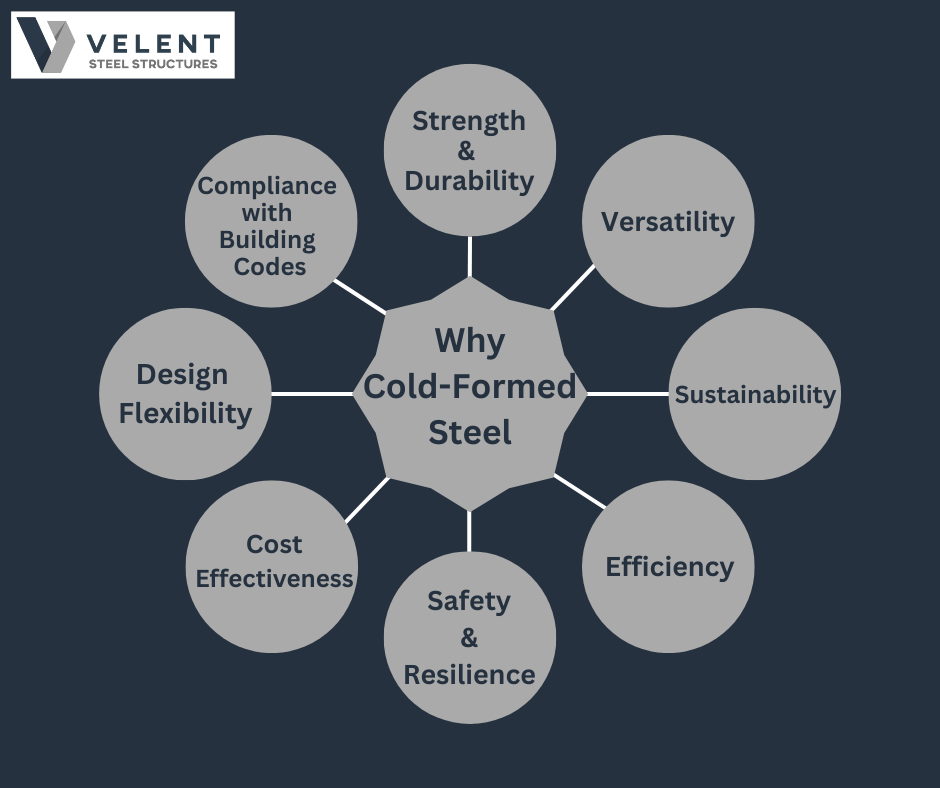In today’s rapidly evolving construction landscape, every material choice plays a crucial role in determining project success. Developers, architects, and builders must consider not just upfront costs but also long-term durability, insurance implications, and structural integrity. While wood has traditionally been a dominant choice for framing, cold-formed steel (CFS) is emerging as the smarter, more cost-effective alternative.
Beyond its strength and resilience, CFS offers substantial insurance savings, particularly with builder’s risk insurance, making it a financially sound investment. With insurance costs rising—builder’s risk premiums have increased by up to 30% in recent years (Insurance Journal, 2023)—choosing the right materials can significantly impact a project’s bottom line.

How Material Selection Impacts Builder’s Risk Insurance
Builder’s risk insurance—or course of construction insurance—protects projects from fire, theft, vandalism, and weather-related damage. However, the materials you choose directly influence your premium costs.
Insurers assess risk levels associated with different construction methods, and wood-framed buildings are often deemed higher risk due to their flammability and susceptibility to damage.
CFS, on the other hand, offers superior fire resistance, durability, and structural integrity, leading to lower insurance premiums and long-term savings.
The Numbers Don’t Lie: How Steel Saves Money
Fire Resistance & Insurance Savings
One of the most compelling reasons to choose CFS is its non-combustibility. Unlike wood, which can ignite and spread flames quickly, steel does not burn, making it one of the safest materials in fire-prone areas.
According to the National Fire Protection Association (NFPA), an average of 4,300 construction site fires occur annually in the U.S., causing over $375 million in damages. Because steel dramatically reduces fire risk, insurance premiums for steel-framed structures can be 25% to 75% lower than for wood-framed buildings.
Case study: A six-story mixed-use residential and commercial project in Texas initially planned to use wood framing. However, after evaluating insurance costs, the developer switched to cold-formed steel (CFS).
● Builder’s risk insurance for wood framing was quoted at $2.1 million
● With CFS, the insurance cost dropped to just $540,000
This decision resulted in savings of over $1.5 million, proving that steel framing not only enhances durability but also significantly reduces financial risk.
Structural Strength & Longevity
Beyond insurance benefits, CFS offers unmatched structural stability:
- Higher load-bearing capacity – Cold-formed steel can withstand extreme forces, reducing risks of collapse or deformation.
- No warping, shrinking, or rotting – Unlike wood, steel remains stable over time, reducing maintenance costs.
- Pest-proof – Termites cause over $5 billion in damages annually in the U.S. (EPA), but steel eliminates this risk entirely.
These factors mean fewer insurance claims, lower maintenance costs, and a longer-lasting, more resilient structure.
Weather Resistance & Risk Reduction
Natural disasters can be catastrophic for buildings, and wood-framed structures are often vulnerable to:
- Floods – Wood absorbs moisture, leading to rot and mold, while CFS remains unaffected.
- Hurricanes – CFS structures can withstand winds up to 170 mph, making them ideal for storm-prone regions.
- Wildfires – As wildfires increase in frequency, insurance companies continue raising rates for wood-framed buildings.
With extreme weather events becoming more common, CFS construction provides a safer, more insurable alternative.
Why Builders and Developers Should Make the Switch
The decision between wood and cold-formed steel framing isn’t just about materials—it’s about financial viability, safety, and long-term investment.
- Lower builder’s risk insurance costs
- Increased durability and lower maintenance expenses
- Fireproof, termite-proof, and mold-resistant
- Meets stringent building codes and safety regulations
As the construction industry evolves, CFS is proving to be the material of choice for forward-thinking developers looking to reduce risk, enhance safety, and maximize profitability.
Thinking of building? It’s time to go steel! Reach out today to explore how CFS can transform your next project.


